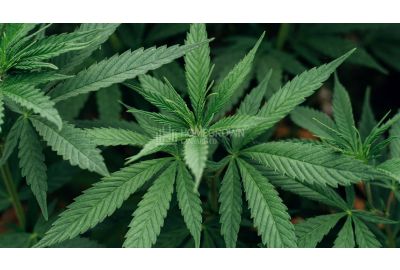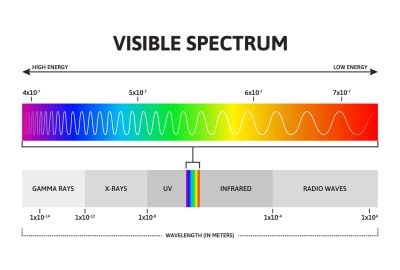The Best Cannabis Light Spectrum by Stage
Cannabis light spectrums can sound obscure to those who never excelled in physics. In reality, they’re far from confusing and among the most important responsibilities to master for setting up your grow room.
Think about it. What’s the biggest difference between cultivating in an enclosed space and the great outdoors? The presence or absence of the sun.
Indoor setups are indispensable. They let you refine the environment to suit any marijuana strain. Still, it requires some understanding to tick all the boxes for this majestic creation of nature to thrive in an artificial, controlled setting. Lamps make a world of difference.
Today, we’re running through everything you need to know about this aspect of indoor gardening. Stick with us, and you’ll effortlessly find the best light spectrum for your weed garden.
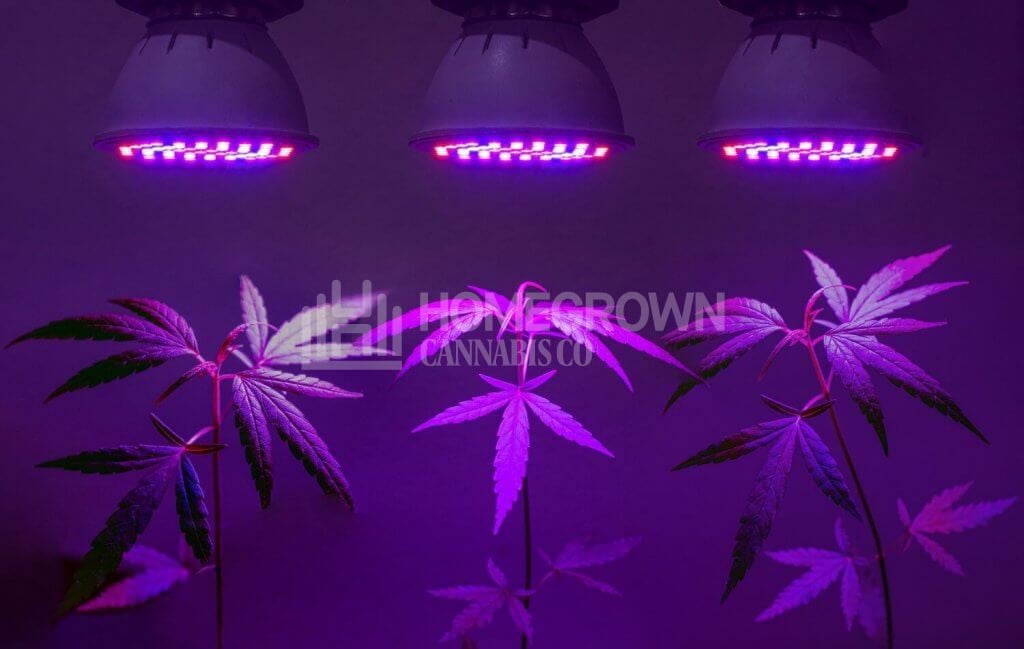
What is the light spectrum?
The sun emits energy in the form of radiation, which includes but isn’t limited to visible light. The ozone layer blocks that radiation, reflecting most back into space. For this reason, we can see only a part of the wavelengths that reach the Earth.
For the human eye, visible light is between 380 nm and 750 nm. You’ll also hear this range called ‘the color spectrum.’
The light spectrum for weed is a bit broader, incorporating wavelengths between 300 nm and 1100 nm. Before we dive into what cannabis can and cannot absorb, let’s explain the science in a bit more detail.
Is color temperature the same as light spectrum?
Color temperature is a frequent term used to discuss the cannabis light spectrum, as well as lamps in general. It describes how a specific light looks and is expressed in Kelvin (K), the international temperature unit.
This unit of measurement doesn’t tell you how hot your bulbs will get. Instead, it deals with visual temperature, or how warm or cool a light source is.
As a rule of thumb, cool lights are higher K and blueish. A cold, lower K light is red or orange.
Color temperature isn’t the same as the marijuana light spectrum (or any light spectrum for that matter). While the latter has to do with wavelengths, the former illustrates how the light looks to humans.
A certain lamp might emit a beam spanning across the entire visible light spectrum. Other sources emanate a restricted set of wavelengths. These two appear the same to the naked eye, which is why a grower sometimes has to consider nanometers.
The main takeaway here is straightforward. Not all lamps radiate all necessary wavelengths that make up the cannabis light spectrum, but you’ll need to think in terms of waves, not appearance, to mitigate that.
Cannabis light spectrum chart
Cannabis plants can use a broader light scope than humans. That doesn’t mean that you can place any lamp in your setup and expect optimal results, though.
Exposure to a range between 400 nm and 700 nm is ideal for photosynthesis. Different wavelengths within that scope suit different growth stages.

Why is the light spectrum for cannabis important?
An adequate cannabis light spectrum is the key to a flourishing garden of marijuana plants. It helps your crops generate energy, develop, blossom, and coat their flowers in resin.
Weed is pretty light-sensitive. It’s on you to adjust the color, frequency, and intensity for each growth stage.
In simple terms, the light spectrum for growing weed should emulate the conditions found in nature. A full-color light span optimizes development and flower production rate, especially after maximizing the perfect wavelengths for each stage.
Now that you understand why the light spectrum for weed is essential, let’s explain it by type and stage. That way, you have concrete steps to follow and achieve abundance.
Light spectrum for cannabis by type
Various colors on the light spectrum for cannabis plants serve different purposes on the seed to harvest journey. Let’s examine the available options and their effects on your weed garden.
UV light spectrum (100–400 nm)
UV lights sit at the lowest part of the light spectrum, most of their expression remaining below the levels observable to the naked eye. There are three main types of UV light:
- UVA is the most significant part of UV reaching the atmosphere. It’s the part of sunshine that could be harmful to our skin.
- UVB amounts to around 1% of the UV radiation on Earth. It’s a source of vitamin D for humans and aids photosynthesis in flora.
- UVC rarely ever reaches the atmosphere, which is good. It’s not useful to either humans or vegetation. In fact, it can be pretty dangerous.
The fact that you can’t see UV doesn’t mean it’s useless on the cannabis light spectrum. Remember to supplement UVA and UVB, but never UVC, though.
How does it affect cannabis plants?
A dash of UVA in vegging and some UVB in the final weeks of the cannabis flowering stage can be beneficial for the potency of your bud.
This potential of UV exposure to boost THC levels stems from the stress it causes to your cannabis plants. Low levels of stress encourage crops to develop defense mechanisms. Lucky for us in the growing community, weed uses cannabinoids as sunscreen.
Blue light spectrum (400–500 nm)
The blue part of the light spectrum for cannabis is close to UVA, right on the invisible border. It carries less energy than UV, which makes the effects of these photons milder and indispensable for vegging.
These rays emanate from tech devices. When it comes to farming, you’ll most often find them with LED grow lights.
How does it affect cannabis plants?
Blue is the ideal veg light spectrum. It’s your crops’ ally as they develop foliage and kickstart photosynthesis, enhancing harvest potential from day one.
This light type makes the plants compact and bushy, which lets them maintain large flower formations down the line. The leaves become large, strong, and healthy, improving the plant’s ability to synthesize energy.

Green light spectrum (500–600 nm)
Green sits on the middle of the marijuana light spectrum, between red and blue. It’s not as well-researched as the endpoints, but the existing studies show some benefits of green in canna farming.
How does it affect cannabis plants?
Red and blue light permeates only the initial layer of the leaf. Green, on the other hand, digs deep. It triggers photosynthesis in the lower leaf layers.
There’s a flip side, too. Green could lead to stem elongation. As such, it’s useful in vegging but better avoided in flowering.
Red light spectrum (600–700 nm)
Red light from the far end of the spectrum appears dim to the eye, but blooming herbs eat it up.
If your plants go through the vegetative stage under crimson lamps, they end up elongated and thin. By the time they start producing their buds, red becomes the essential light for further development.
How does it affect cannabis plants?
Red light promotes photosynthesis and prolongs the flowering period. The combination of these factors, hearty nourishment, and a wider timeframe for ripening only improves the yield you’ll eventually collect.
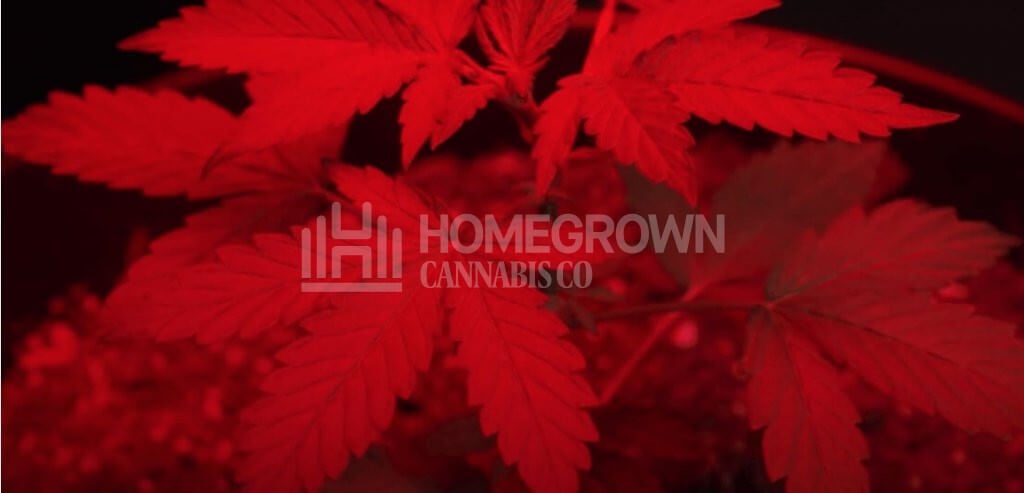
Far-red light spectrum (700–850 nm)
Far-red is the peak of the visible light spectrum. We humans can barely perceive its dimness, but it can be critical for manipulating cannabis growth.
How does it affect cannabis plants?
Far-red light has two primary perks. For one, it’s almost as efficient as green in traveling through the leaf layers and boosting photosynthesis.
Also, this part of the marijuana light spectrum is dim. This lack of exposure suggests to a crop that a larger bush is shadowing it. This perceived threat triggers a defense mechanism, encouraging it to focus on growth to get more sunlight.
This elongation isn’t the most desirable for your everyday grower. It’s excellent for mother plants and cuttings, though.
What is the ideal cannabis light spectrum by stage?
The needs of your marijuana herbs vary from one growth stage to the next. One of those changing aspects is light requirements.
Grow lights for indoor plants exist in many forms for a good reason. While it might look the same, the light spectrum for flowering plants should contain slightly different wavelengths than that for vegging. Let’s explore which types match which phase.
Best light spectrum for seedlings
Blue is the best cannabis light spectrum for seedlings and young crops. After all, it’s when a plant starts establishing a root system and developing its first little leaves.
A mellow light that prevents overstretching and advances photosynthesis helps the seed expand into a seedling and eventually into a vegging herb. Plus, blue is less penetrating than red and orange beams, protecting your green buddies from light burn.
Best spectrum for veg
The best spectrum for the vegetative stage stands in the blue light range, between 400 and 500 nm. It ensures that plants stay compact and dedicate their energy to stem strengthening and leaf production rather than making new branches.
Blue light opens the stomata, facilitating carbon dioxide absorption. This effect encourages photosynthesis, stimulating healthy growth in the long run. It also decreases stem stretching, maintaining the structural integrity of the entire crop.
By providing these wavelengths, you’re imitating the long, bright days of spring when cannabis starts developing like mad.
As vegging wraps up, start increasing the red while slightly reducing the blue. That way, you mimic the shortening days of late summer and notify the plants it’s time to start blossoming.
Metal halide light bulbs, CFLs, T5 lamps, and LED strips with blue bands are suitable options for this stage of development.
Best light spectrum for flowering
Red light is ideal for flowering cannabis, resembling late spring and early fall when cannabis produces buds and finishes its season.
Wavelengths between 600 and 700 nm are the peak for chlorophyll absorption. They heighten flower and resin development for abundant harvests of fat colas.
The best light spectrum for flowering doesn’t completely abandon blue, either. It only emphasizes shades of red and orange, which both induce and accelerate flowering.
High-pressure sodium lamp systems are a good option for flowering, as their spectrum is naturally reddish. LEDs also produce that type of light.
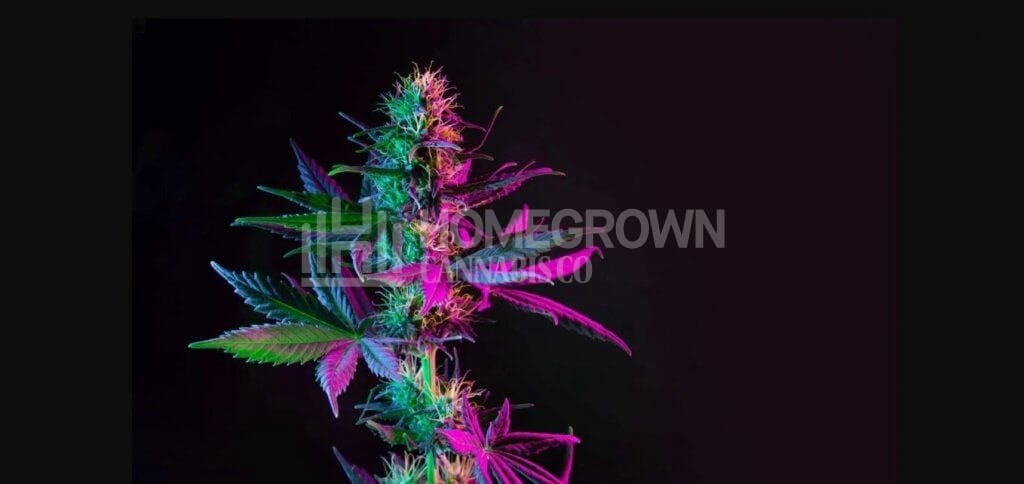
Key takeaways about light spectrum for weed
Nothing can truly replace the sun, but sometimes, we have to compromise. A bargain doesn’t have to imply a reduction in quality.
You now understand how tweaking the lamps can optimize each step of plant development. Why not give your garden the best chance it can get by providing the best light spectrum for cannabis every step of the way?
Stay tuned to our blog for more handy guides such as this one. We aim to help every grower drive each weed seed to its full potential.
About the author: Derek LaRose
Also known as Kronic from The Cannabis Kronicles, Derek LaRose is a young ambitious cultivator and a staple educator for indoor cultivation.

